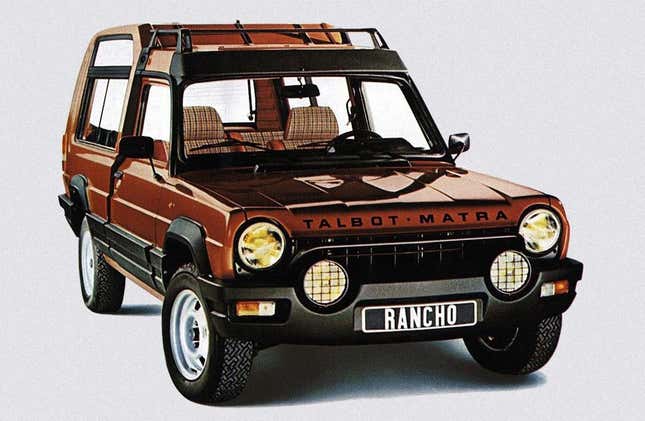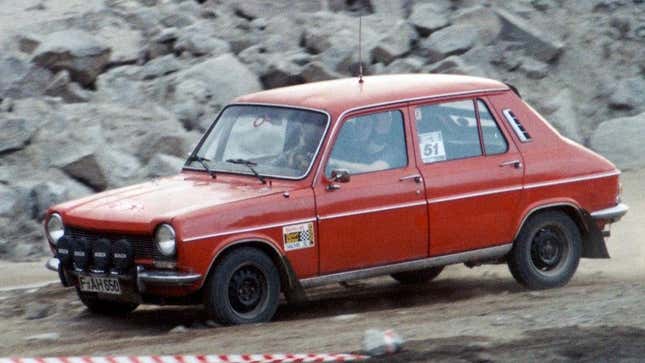Many carmakers claim that one of its different models was the first crossover, but as far as I’m concerned that’s like being the first locust in the plague. Curbside Classics says the Matra Rancho was truly the world’s first crossover passenger car, and goes on to explain that the two-wheel drive Rancho was inspired by the success of the Range Rover. In that sense, the Rancho is a pioneer that sought to have all of the looks of an off-roader but none of the capability — a formula that some modern crossovers have perfected.
I dig the Rancho, because what it lacked in off-road prowess and performance it made up for in style. The Rancho is mighty fly, sporting a pop-top roof that would later be seen on the first-generation Land Rover Discovery. Whether the Rancho had some influence on the design of the first Discovery is unclear, but it would be fitting since the Rancho tried to emulate the Range Rover’s vibe.

According to Simca Club UK, the Rancho tried to appeal to buyers who wanted a Range Rover but couldn’t afford one. In 1978 it undercut the Rover by a good margin, starting at £5,670 versus the Rover’s £9,815 (about $7,191 versus $12,447 at current exchange rates), but it was only available with two-wheel drive. This front-engine, front-wheel-drive layout called into question the off-road capability of the Rancho, which Matra emphasized through its marketing of the new vehicle.
The Rancho was based on the pickup version of the Simca 1100, also known as the 1100 delivery van, which looked like a little truck model of the popular car. It was initially known as the Matra-Simca Rancho and, later, the Talbot-Matra Rancho. Production lasted from 1977 through 1984. The Rancho witnessed the rebranding of Matra-Simca to Talbot-Matra when Chyrsler Europe sold Simca to Peugeot Citroën. The rebrand erased the nomenclature that linked the Rancho to the Simca 1100, but the influence is clear.

It shared the same engine, a 1.4-liter inline-4 making up to 80 horsepower and 88 pound-feet of torque. The Rancho’s compact platform rode had a slightly longer chassis and it featured a fiberglass body with the appearance of a rough and tumble vehicle. It didn’t have much more ground clearance than the Simca 1100, but the Rancho came with plastic cladding on the wheel wells and side panels. It had off-road lighting, too, and there was even an option for a front bumper with a winch and a roof-mounted spare tire. All things you’d expect from a hardy off-roader.
It was not nearly as capable as the Range Rover, but it turned out to be quite popular. People flocked to the Rancho and it exceeded Matra’s estimated demand by a lot. Matra planned to make 20,000 Ranchos, but ended up making nearly 58,000 of the Rancho by the end of production, as the Simca Club UK reports.
The Rancho went on to be the predecessor of the Renault Espace, another fan favorite here at Jalopnik. I guess, in light of that, I can forgive it for being the first “soft-roader” or crossover SUV. Even if I weren’t willing to do so, I can’t deny that the Rancho looked cool as hell.


